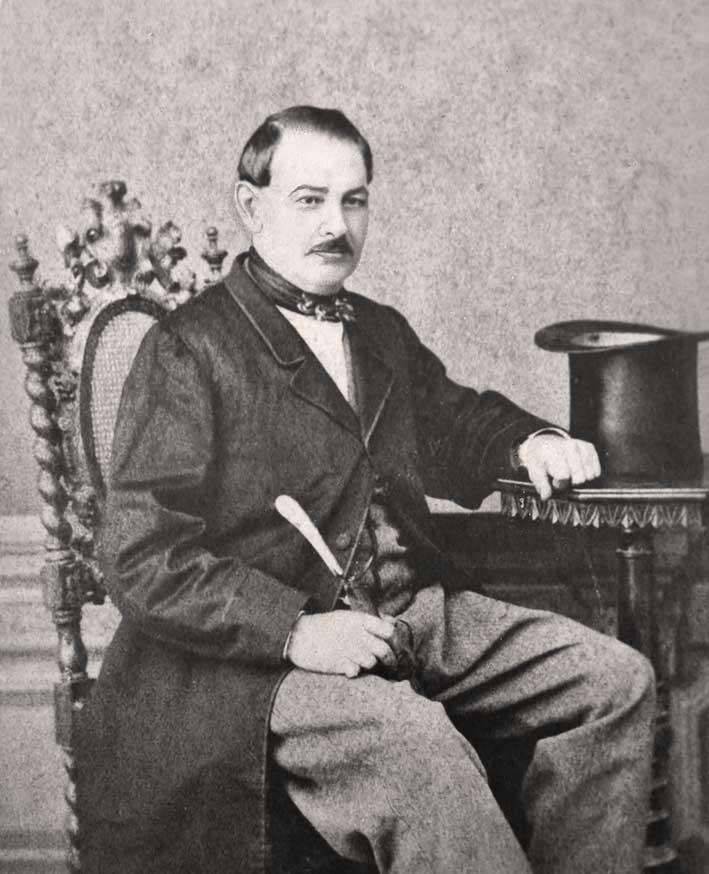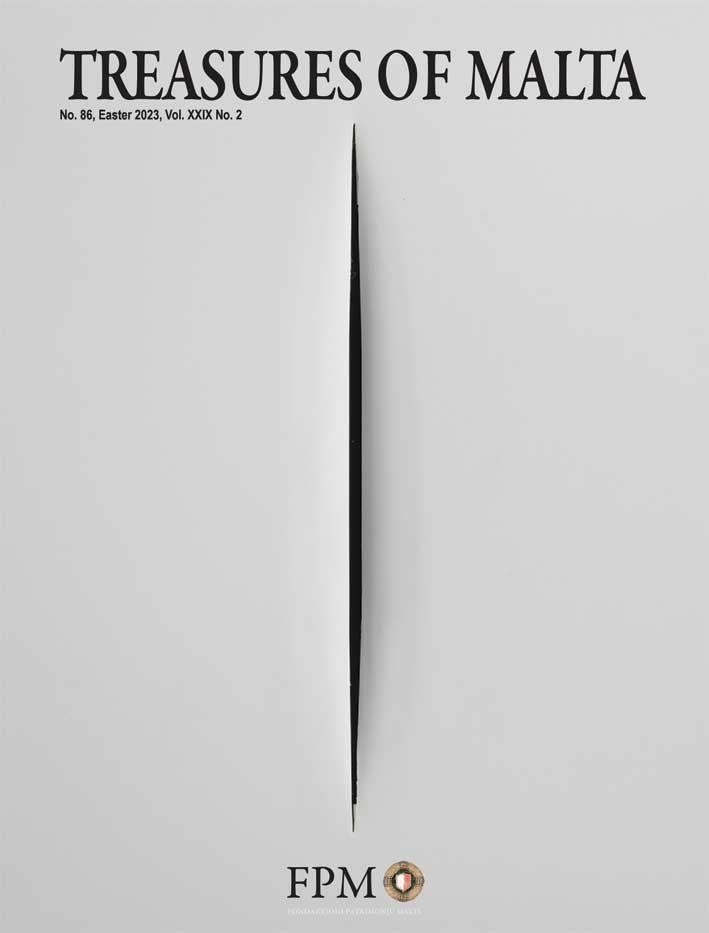The cover of the Easter issue of Treasures of Malta immediately intrigued me. Gray with a slit in the middle. I turned quickly to the back to look for an explanation. It was by Lucio Fontana from the Concetti SpaziaIi series. Canvas cut with a Stanley knife. From a private collection. Giulia Privitelli gives a detailed explanation but I am only going to quote the first few sentences: "In the decades following the Second World War, the Argentine Italian artist Lucio Fontana (1899-1968) became singularly concerned with the creative possibilities of the hole or cut (taglio): a hallmark of his artistic career and with which he is almost exclusively and synonymously associated to this day." So now I have an idea what the cover is about.

The insert in this issue is a lively reproduction of a poster by Emvin Cremona, for the Malta Government Tourism Bureau printed in Rome in 1956 and reprinted in 1964. It is very enticing and it must have enticed many to come to Malta, a very different Malta, in those early days of tourism.

I then browsed through the issue and read some of it. I know that the Summer issue is ready and will soon land on my desk in its buff coloured envelope. In the Easter issue I immediately fell in love with the article by Noel Toledo who delves into the history of the Rizzo Marich family and their tobacco shop in Palace Square, Valletta. The name Marich immediately struck a chord. There were at least two Mariches at school all those years ago. I always assumed they were British, from a navy family perhaps. I have a photo of a Marich taken in Mauritius on our patio...alas she has since passed away I am told.
I was introduced by my daughter, at a supermarket, to another Marich whose daughter, she told me, was at school with mine. I spoke about the article I had just finished reading in TOM. She told me she has a spare copy of the book, for yes, Mr Toledo has written a book about it, and she would send it to me.

I have always been in love with the exotic. How do you suppose I finished up in Mauritius not having any idea where abouts it was in the world? The idea of a smoking divan in Valletta captured my imagination. It immediately brought to mind Gustave Flaubert's classic Flaubert in Egypt with its dancing girls, bazaars and brothels. But the smoking divan in Valletta was frequented by a genteel clientele. No belly dancers there.

So back to the article, The Rizzo Marich Dynasty and the Tobacco Industry in Malta. "It was not just any shop but a smoking divan, a popular rendezvous point for Maltese gentry, naval and military senior officers, where they would smoke, relax, and discuss the latest topics of the day. V. Marich & Co. was established in 1838 and closed in November 1959 - a span of 120 years in which the tobacco industry had to face various challenges," Mr Toledo writes. This was a place where gentlemen addicted to nicotine habitually resorted. There were alcoholic concoctions produced by the Marich Brothers as well and no doubt other drinks to accompany the smoking.
The original owner of this tobacco business was Vincenzo Marich born around 1813 in Malta, to Captain Antonio Marich (born in Dubrovnik, Croatia) and his Maltese wife, Maddalena Lorè. But Vincenzo and his wife Natalizia did not have any children and eventually left their business to Lawrence Rizzo, a cousin, on condition that he appends the surname 'Marich' to his own, thus eventually known as 'Lawrence Rizzo Marich'.
Soon he was given permission to affix 'By appointment to His Royal Highness the Prince of Wales' over the door of his establishment. One can only imagine the prestige this brought to the divan, attracting more important clients.
This was the first testimonial by royalty but certainly not the last.
The company went from strength to strength. In the 1890s besides supplying Army messes and clubs they were exporting cigars and tobacco not only to the UK but also to the East. Eventually they entered into an agreement with A.G. Cousis & Co to manufacture Marich cigarettes around the beginning of the twentieth century when Joseph Rizzo Marich was running the business. Throughout the second decade of the 20th century, the business, in particular export, continued to increase.
Women and children were utilized extensively in the production process. The main production was cigars which were mainly manufactured by hand. Many of the employees were female workers, some under 15 years of age. Marich cigarettes were also available in South Africa, Australia, Canada, New Zealand and throughout the British colonies. this from tiny Malta in the Mediterranean. So enterprising.
By the end of the 1930 the company seems to have slowed down its exports. "Its last known adverts in British newspapers appeared in 1932." A.G.Cousis & Co who produced the Marich cigarettes closed by the early 1930s. Not ones to be deterred Marich started producing their own cigarettes. Production started slowing down after 1939, the beginning of World War II. The British moved the headquarters of the Royal Navy Mediterranean Fleet from Valletta to Alexandria, where it was less exposed to enemy action and out of sight of Italy, then an enemy. It is evident that the sale of tobacco was very much entwined with the British Services and this move to Egypt must have had a negative effect.
By June 1941 Valletta was under attack, the once popular 'smoking divan' almost deserted and its walls cracked. The once thriving business was ruined, another victim of war. However, an attempt to save it was made by moving it to Sliema.
By 1947 the company had stopped producing cigarettes and was importing them instead. They became distributors for du Maurier cigarettes, named after the famous British actor, Sir Gerald du Maurier, father of the writer Daphne. I well remember the red du Maurier box in which they came. Yes, I am that old.
But nothing is permanent and the end of the business was nigh. Members of the family passed away; children were not interested and chose other careers. In 1959 the business was dissolved.
It is interesting to note that Caffe Cordina took over the tenancy of the Marich premises which since 1960 have formed part or the Caffe. Whenever I shall sit there for a coffee it will be impossible for me not to remember V. Marich's Smoking Divan and the making of a successful business.
There are so many interesting articles to read in this issue of Treasures as well as book and cultural reviews. So many hard working people doing all that research, all that writing.
Patrimonju is a hive of activity. Reading Judge Giovanni Bonello's editorial alone leaves me quite breathless. As he writes: "All in all, it promises to be an exciting year ahead."
[email protected]